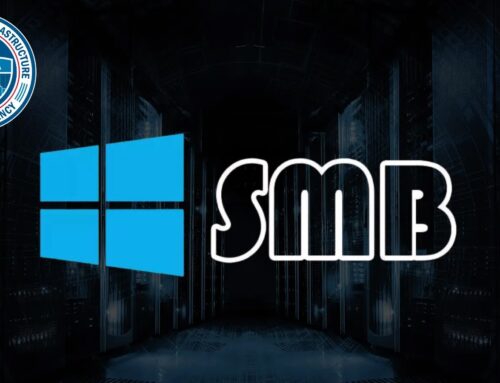Hackers Delivering Cobalt Strike Beacon Leveraging GitHub and Social Media
The digital threat landscape is in constant flux, but some attack methodologies stand out for their increasing sophistication and elusive nature. A recent, highly effective cyberattack campaign targeting the Russian IT industry is a stark reminder of how threat actors are adapting by leveraging legitimate online platforms to distribute malicious payloads. This campaign, observed peaking in late 2024 and continuing into early 2025, exemplifies a significant evolution in TTPs (Tactics, Techniques, and Procedures), specifically the use of widely trusted social media platforms and GitHub for distributing the potent Cobalt Strike Beacon.
The Evolution of Attack Methodologies: Leveraging Trust
Threat actors are continuously refining their craft, moving beyond traditional phishing attachments and malicious websites. The campaign described demonstrates a clear shift towards exploiting the inherent trust users place in popular, legitimate services. By utilizing social media and GitHub, attackers bypass many standard perimeter defenses and significantly enhance the credibility of their malicious links. This approach makes it exceptionally difficult for users to discern legitimate content from highly sophisticated social engineering traps.
Cobalt Strike Beacon: A Powerful Tool in Adversarial Hands
Cobalt Strike is a legitimate penetration testing tool designed for red team operations to simulate advanced persistent threats. However, its powerful capabilities, including post-exploitation, lateral movement, and data exfiltration, make it incredibly attractive to malicious actors. When deployed as a “beacon,” it establishes a foothold on compromised systems, allowing attackers persistent access and control. The continued use of Cobalt Strike by various threat groups underscores its effectiveness and versatility in enabling sophisticated attacks.
Campaign Analysis: A Timeline of Deception
The targeted campaign, primarily focusing on the Russian IT sector, saw its most intense activity during November and December 2024, persisting through April 2025. This extended duration highlights the attackers’ patience and dedication in pursuing their objectives. The choice of the IT industry as a target is strategic, as it often provides access to sensitive data, intellectual property, and critical infrastructure.
- November-December 2024: Peak activity observed, indicating initial successful breaches and widespread dissemination efforts.
- Through April 2025: Continued presence, suggesting established persistence mechanisms and ongoing operational capabilities of the attackers.
The Role of GitHub and Social Media in Distribution
Perhaps the most concerning aspect of this campaign is the ingenious abuse of platforms like GitHub and various social media channels. Attackers are not directly hosting malware on these sites but rather using them as distribution points for malicious links or initial compromise vectors. For instance:
- GitHub: Can be used to host seemingly innocuous code repositories that, when cloned or downloaded, initiate the infection chain or download the Cobalt Strike Beacon. Alternatively, legitimate open-source projects might be forked and subtly altered to include malicious code, relying on the project’s reputation.
- Social Media: Platforms like LinkedIn, Telegram, or VK (in the Russian context) are ideal for spear-phishing. Attackers can pose as recruiters, potential business partners, or colleagues, delivering links that lead to malicious content hosted on GitHub or other compromised sites. Trust built through social connections is then exploited to deliver the payload.
Remediation Actions and Defensive Strategies
Defending against such sophisticated campaigns requires a multi-layered approach that combines technical controls with robust security awareness training. Given the evolving nature of these threats, proactive measures are paramount.
- Enhanced Email and Social Media Security: Implement advanced threat protection (ATP) solutions for email and social media platforms. These should include robust URL scanning, sandboxing, and attachment analysis capabilities.
- Endpoint Detection and Response (EDR): Deploy EDR solutions to monitor endpoint activity in real-time. EDR can detect anomalous behavior indicative of Cobalt Strike beaconing or post-exploitation activities, even if initial infection bypasses traditional antivirus.
- Network Traffic Analysis (NTA): Monitor network traffic for unusual patterns, C2 (Command and Control) communications, and known Cobalt Strike indicators. Threat intelligence feeds integrated into NTA tools can enhance detection.
- User Awareness Training: Regularly educate employees on sophisticated social engineering tactics, including those leveraging trusted platforms. Emphasize verification of links and sender identities, regardless of apparent legitimacy. Train users to report suspicious activity immediately.
- Principle of Least Privilege: Enforce the principle of least privilege across all systems and user accounts. This limits the potential damage an attacker can inflict even if a system is compromised.
- Software and System Patching: Maintain a rigorous patching schedule for all operating systems, applications, and network devices. While not directly related to this specific social engineering vector, unpatched vulnerabilities can provide alternative avenues for attackers once they gain initial access.
- Multi-Factor Authentication (MFA): Implement MFA for all critical accounts and services, significantly increasing the difficulty for attackers to gain unauthorized access even with stolen credentials.
- GitHub Security Best Practices: For organizations using GitHub, implement strict code review policies, use GitHub Actions security features, and monitor for suspicious repository activity, especially forks from internal projects.
Tools for Detection and Mitigation
| Tool Name | Purpose | Link |
|---|---|---|
| Mandiant Advantage/FireEye EPT | Threat Intelligence & Endpoint Protection | https://www.mandiant.com/advantage |
| Palo Alto Networks Cortex XDR | Endpoint Detection & Response (EDR) | https://www.paloaltonetworks.com/cortex/cortex-xdr |
| CrowdStrike Falcon Insight | EDR and Threat Intelligence | https://www.crowdstrike.com/products/falcon-platform/falcon-insight-edr/ |
| Proofpoint ATP | Email and Social Media Protection | https://www.proofpoint.com/us/products/advanced-threat-protection |
| Suricata | Network Intrusion Detection System (IDS) | https://suricata-ids.org/ |
Conclusion: Adapting to the New Reality of Trust Exploitation
The campaign delivering Cobalt Strike Beacon via GitHub and social media is a critical reminder that traditional security perimeters are no longer sufficient. Attackers are actively exploiting the trust inherent in legitimate platforms and the human element through sophisticated social engineering. Organizations must invest in advanced detection capabilities, robust security awareness training, and a proactive posture that anticipates evolving adversarial tactics. The emphasis must shift from simply blocking known threats to identifying and responding to anomalous behaviors, regardless of their source.





